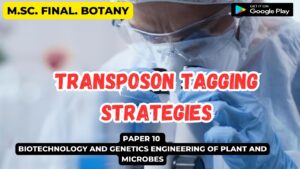![]()
Proteomics
- The term proteomics was first coined in 1997 to make an analogy with genomics, the study of the genome.
- The word proteome is a portmanteau of protein and genome, and was coined by Marc Wilkins in 1994.
- Proteomics is an interdisciplinary domain formed on the basis of the research and development of
the Human Genome Project; it is also emerging scientific research and exploration of proteomes from the overall level of intracellular protein composition, structure,
and its own unique activity patterns. - It is an important component of functional genomics.
- The proteome is also very dynamic.
- Most of our cells contain the same
genome regardless of the cell type, developmental stage or environmental
conditions. - The proteome, however, varies considerably in these differing
circumstances due to different patterns of gene expression and different patterns of protein modification. - Proteomics defined as the study of the proteome: the collection of all the proteins expressed from the genome in all its forms, polymorphisms and post-translational modifications (PTMs).
- Broad-based proteomics is a strategy wherein disease or physiological models are analyzed with the most well-suited proteomics technologies to reveal changes or differences in protein make-up between the experimental condition and controls.
- This approach allows for the optimal
discovery of the changes which define the model system. - Screening for the maximum number of protein changes limits experimental bias by not excluding groups of proteins, therefore making it imperative to use the most appropriate
technology for the biological system and hypothesis being addressed.
Branches of Proteomics
- Proteomics covers a number of different aspects of protein function, including the following:
(i) Structural proteomics
- This is the large-scale analysis of protein structures.
- Protein structure comparisons
can help to identify the functions of newly discovered genes. - Structural analysis can also show where drugs bind to proteins and where proteins interact with each
other. - This is achieved using technologies such as X-ray crystallography and NMR spectroscopy.
(ii) Expression proteomics
- The large-scale analysis of protein expression is known as Expression proteomics.
- This can help to identify the main proteins found in a particular sample and proteins differentially expressed in related samples, such as diseased vs. healthy tissue.
- A protein found only in a diseased sample may represent a useful drug
target or diagnostic marker. - Proteins with similar expression profiles may also be functionally related.
- Technologies such as 2D-PAGE and mass spectrometry are used here.
(iii) Interaction proteomics
- The large-scale analysis of protein interactions .
- The characterization of protein-protein interactions helps to determine protein functions and can also show how proteins assemble in larger complexes.
- Technologies such as affinity purification, mass spectrometry and the yeast two-hybrid system are particularly useful.
Plant Proteomics
- Proteomics has greatly advanced our understanding of proteome composition, modulation and modification in model plant systems, and crop research.
- Proteomics approaches have also been used to characterize proteome modulation during plant development processes as well as to profile proteomes of plant organs.
- In order to understand and modelize development processes, it is particularly important to access complete proteome profile (i.e. high proteome coverage) and in some cases to perform proteome profiling of specific cell types.
- Both aspects are still limited in plant proteomics, even for model plant species.
- A number of descriptive studies have characterized proteomes and phosphoproteomes of cell dedifferentiation phloem,
- plant organs including leaves, stems, internodes, roots, pollen and seeds.
- Although significant advances in the comprehensive profiling, functional analysis, and regulation of proteins has occurred in model organisms such as yeast (Saccharomyces cervisiae) and in humans, proteomics research in plants has not advanced at the same pace.
- The availability of the complete Arabidopsis (Arabidopsis thaliana) genome, which is small compared to that of other plants, along with an increasingly comprehensive catalog of protein-coding information from large-scale cDNA sequencing and transcript mapping experiments, set it apart as a complex but accessible model organism to study plant proteomics.
Proteomic Research
- Proteomics has recently come into the act as a promising force to transform
biology and medicine. - It is becoming increasingly apparent that changes in mRNA expression correlate poorly with protein expression changes.
- Proteins change enormously in patterns of expressions across developmental and physiological responses.
- Proteins also face changes on the act of environmental perturbations.
- Proteins are the actual effectors driving cell behavior.
- The field of proteomics strives to characterize protein structure and function, protein-protein, protein nucleic acid, protein-lipid, and enzyme-substrate interactions, protein processing and folding, protein activation, cellular and subcellular localization, protein turnover and synthesis rates, and even promoter usage.
- Integrating proteomic data with information such as gene, mRNA and metabolic profiles helps in better
understanding of how the system works.
Protein modification
- Almost all proteins are modified from their pure translated amino-acid sequence, so-called post-translational modification.
- Specialized methods have been developed to study phosphorylation (phosphoproteomics) and glycosylation (glycoproteomics).
Cellular proteomics
- Cellular proteomics is a new branch of proteomics that goal is to map the location of proteins and protein-protein interactions in whole cells during key cell events.
- Centers are around the use of techniques such as X-ray Tomography and optical fluorescence microscopy.
Experimental bioinformatics
- A branch of bioinformatics, as it is applied in proteomics, coined by Mathias Mann.
- It involves the mutual design of experimental and bioinformatics methods to create (extract) new types of information from proteomics experiments.
- Proteomics has steadily gained momentum over the past decade with the evolution of several approaches.
- Few of these are new and others build on traditional methods.
- Mass spectrometry-based methods and micro arrays are the most common technologies for large-scale study of proteins.
- There are two mass spectrometry-based methods currently used for protein profiling.
- The more established and widespread method uses high resolution, two-dimensional electrophoresis to separate proteins from different samples in parallel, followed by
selection and staining of differentially expressed proteins to be identified by mass spectrometry. - Despite the advances in 2DE and its maturity, it has its limits as well.
- The central concern is the inability to resolve all the proteins within a sample, given their dramatic range in expression level and differing properties.
- The second quantitative approach uses stable isotope tags to differentially label proteins from two different complex mixtures.
- Here, the proteins within a complex
mixture are labeled first isotopically, and then digested to yield labeled peptides. - The labeled mixtures are then combined, the peptides separated by
multidimensional liquid chromatography and analyzed by tandem mass spectrometry. - Isotope coded affinity tag (ICAT) reagents are the widely used
isotope tags. - In this method, the cysteine residues of proteins get covalently attached to the ICAT reagent, thereby reducing the complexity of the mixtures omitting the non-cysteine residues.
- Quantitative proteomics using stable isotopic tagging is an increasingly useful tool in modern development.
- Firstly, chemical reactions have been used to introduce tags into specific sites or proteins for the purpose of probing specific protein functionalities.
- The isolation of phosphorylated peptides has been achieved using
isotopic labeling and selective chemistries to capture the fraction of protein among the complex mixture. - Secondly, the ICAT technology was used to differentiate between partially purified or purified macromolecular complexes such as large RNA polymerase II pre-initiation complex and the proteins complexed with yeast
transcription factor. - Thirdly, ICAT labeling was recently combined with chromatin isolation to identify and quantify chromatin-associated proteins.
- Finally ICAT reagents are useful for proteomic profiling of cellular organelles and specific cellular fractions.
- Another quantitative approach is the Accurate Mass and Time (AMT) tag approach developed by Richard D. Smith and coworkers at Pacific Northwest National Laboratory.
- In this approach, increased throughput and sensitivity is achieved by avoiding the needed for tandem mass spectrometry, and making use of precisely determined separation time information and highly accurate mass determinations for peptide and protein identifications
Applications of Proteomics
- One major development to come from the study of human genes and proteins has been the identification of potential new drugs for the treatment of disease.
- This relies on genome and proteome information to identify proteins associated with a disease, which computer software can then use as targets for new drugs.
- For example, if a certain protein is implicated in a disease, its 3D structure provides the information to design drugs to interfere with the action of the protein.
- A molecule that fits the active site of an enzyme, but cannot be released by the enzyme, inactivates the enzyme.
- This is the basis of new drug-discovery tools, which aim to find new drugs to inactivate proteins involved in disease.
- As genetic differences among individuals are found, researchers expect to use these techniques to develop personalized drugs that are more effective for the individual.
- Proteomics is also used to reveal complex plant-insect interactions that help identify candidate genes involved in the defensive response of plants to herbivory.
- Proteome analysis of Arabidopsis peroxisomes has been established as the major unbiased approach for identifying new peroxisomal proteins on a large scale.
- There are many approaches to characterizing the human proteome, which is estimated to contain between 20,000 and 25,000 non-redundant proteins.
- The number of unique protein species will likely increase by between 50,000 and 500,000 due to RNA splicing and proteolysis events, and when post-translational modification are also
considered, the total number of unique human proteins is estimated to range in the low millions
(i) Proteomics as protein biomarkers
- Biomarkers of drug efficacy and toxicity are becoming a key need in the drug development process.
- Mass spectral-based proteomic technologies are ideally suited for the discovery of protein biomarkers in the absence of any prior knowledge of quantitative changes in protein levels.
- The success of any biomarker discovery effort will depend upon the quality of samples analyzed, the ability to generate quantitative information on relative protein levels and the ability to readily interpret the data generated.
(ii) Proteomics in Tumor Metastasis
- Tumor metastasis is the dominant cause of death in cancer patients.
- However, the molecular and cellular mechanisms underlying tumor metastasis are still elusive.
- The identification of protein molecules with their expressions correlated to the
metastatic process would help to understand the metastatic mechanisms and thus facilitate the development of strategies for the therapeutic interventions and clinical management of cancer. - Proteomics is a systematic research approach aiming to provide the global characterization of protein expression and function under given conditions.
- Proteomic technology has been widely used in biomarker discovery and pathogenetic studies including tumor metastasis.
- The combination of proteomics with other experimental approaches in biochemistry, cell biology, molecular genetics and chemistry, together with the development of new technologies and improvements in existing methodologies will continue to extend
its application in studying cancer metastasis.
(iii) Proteomics in renal disease diagnosis
- Proteomics is widely envisioned as playing a significant role in the translation of genomics to clinically useful applications, especially in the areas of diagnostics and prognostics.
- In the diagnosis and treatment of kidney disease, a major priority
is the identification of disease-associated biomarkers. - Proteomics, with its high through put and unbiased approach to the analysis of variations in protein expression patterns (actual phenotypic expression of genetic variation), promises to be the most suitable platform for biomarker discovery.
- Combining such classic analytical techniques as two-dimensional gel electrophoresis with more sophisticated techniques, such as MS, has enabled considerable progress to be made in cataloging and quantifying proteins present in urine and various kidney tissue compartments in both normal and diseased physiological states.
(iv) Proteomics in Neurology
- Proteomics have been widely adopted in most areas of biology and medicine.
- In neurology and neuroscience, many applications of proteomics have involved neurotoxicology and neurometabolism, as well as in the determination of specific proteomic aspects of individual brain areas and body fluids in neurodegeneration.
- Investigation of brain protein groups in neurodegeneration, such as enzymes, cytoskeleton proteins, chaperones, synaptosomal proteins and antioxidant proteins, is in progress as phenotype related proteomics.
- The concomitant detection of several hundred proteins on a gel provides sufficiently comprehensive data to determine a path physiological protein network and its peripheral representatives.
- The rapid spread of proteomics technology, which principally consists of two dimensional gel electrophoresis (2-DE) with in-gel protein digestion of protein spots and identification by mass spectrometry, has provided an explosive amount of results.
(v) Proteomics to fetal and maternal medicine
- The recent elucidation of the human genome sequence has provided a wealth of useful information but does not provide information on diseases caused by changes at the protein level.
- Proteomics includes the characterization and functional analysis of all proteins that are expressed by the genome at a certain moment, under certain conditions. Since expression levels of many proteins strongly depend on complex, but well-balanced regulatory systems, the proteome, unlike the genome, is highly dynamic.
- This variation depends on the biological function of a cell, but also on signals from its environment. In (bio) medical research it has become increasingly apparent that cellular processes, in particular in disease, are determined by multiple proteins.
- Hence it is important not to focus on one single gene product (one protein), but to study the complete set of gene products (the proteome).
- In this way the multi-factorial relations underlying certain diseases may be unraveled potentially identifying therapeutically targets. For many diseases characterization of the functional proteome is crucial for elucidating alterations in protein expression and modifications. When proteins undergo non-genetically determined alterations such as alternative splicing, or post-translational modifications, e.g. phosphorylation or glycosylation, it may affect their function.
- Although abnormalities in splicing or post-translational modifications can cause a disease process, they can also be a consequence.
- An example is that patients with diabetes have high blood glucose which glycosylated hundreds or even thousands of proteins, including HbA1c which is used to monitor diabetic control.
(vi) Proteomics in Urological Cancer Research
- Proteomic analysis allows the comparison of the proteins present in a diseased
tissue sample with the proteins present in a normal tissue sample. - Any proteins, which have been altered either quantitatively or qualitatively between the normal
and diseased samples are likely to be associated with the disease process. - These proteins can be identified and may be useful as diagnostic markers for the early detection of the disease or prognostic markers to predict the outcome of the disease or they may be used as drug targets for the development of new therapeutic agents.
(vii) Proteomics in Autoantibody profiling
- Proteomics technologies enable profiling of autoantibody responses using biological fluids derived from patients with autoimmune disease.
- They provide a powerful tool to characterize auto reactive B-cell responses in diseases including
rheumatoid arthritis, multiple sclerosis, autoimmune diabetes, and systemic lupus erythematosus. - Autoantibody profiling may serve purposes including classification of individual patients and subsets of patients based on their ‘autoantibody fingerprint’, examination of epitope spreading and antibody isotype usage, discovery and characterization of candidate auto antigens, and tailoring antigen specific therapy.
- In the coming decades, proteomics technologies will broaden our understanding of the underlying mechanisms of and will further our ability to diagnose, prognosticate and treat autoimmune disease.
(viii) Proteomics in Cardiovascular research.
- The development of proteomics is a timely one for cardiovascular research.
- Analyses at the organ, sub cellular, and molecular levels have revealed dynamic, complex, and subtle intracellular processes associated with heart and vascular disease.
- The power and flexibility of proteomic analyses, which facilitate protein separation, identification, and characterization, should hasten our understanding of these processes at the protein level.
- Properly applied, proteomics provides researchers with cellular protein “inventories” at specific moments in time, making it ideal for documenting protein modification due to a particular disease, condition, or treatment.
- This is accomplished through the establishment of species- and tissue-specific protein databases, providing a foundation for subsequent proteomic studies.
(ix) Proteomics to diabetes research.
- Proteomics is the investigation of all the proteins and their various modifications
making up a system, be that a cell, tissue or organism. - The techniques involved in proteomics allow the global screening of complex samples of proteins and provide qualitative and quantitative evidence of altered protein expression.
- This lends itself to the investigation of the molecular mechanisms underpinning disease processes
and the effects of treatment.
(x) Proteomics in Nutrition Research
- Proteomics holds great promise for discoveries in nutrition research, including profiles and characteristics of dietary and body proteins; digestion, absorption, and metabolism of nutrients; functions of nutrients and other dietary factors in growth, reproduction, and health; biomarkers of the nutritional status and disease; and individualized requirements of nutrients.
- The proteome analysis is expected to play an important role in solving major nutrition-associated problems in humans and animals, such as obesity, diabetes, cardiovascular disease, cancer, aging, and intrauterine fetal retardation.



